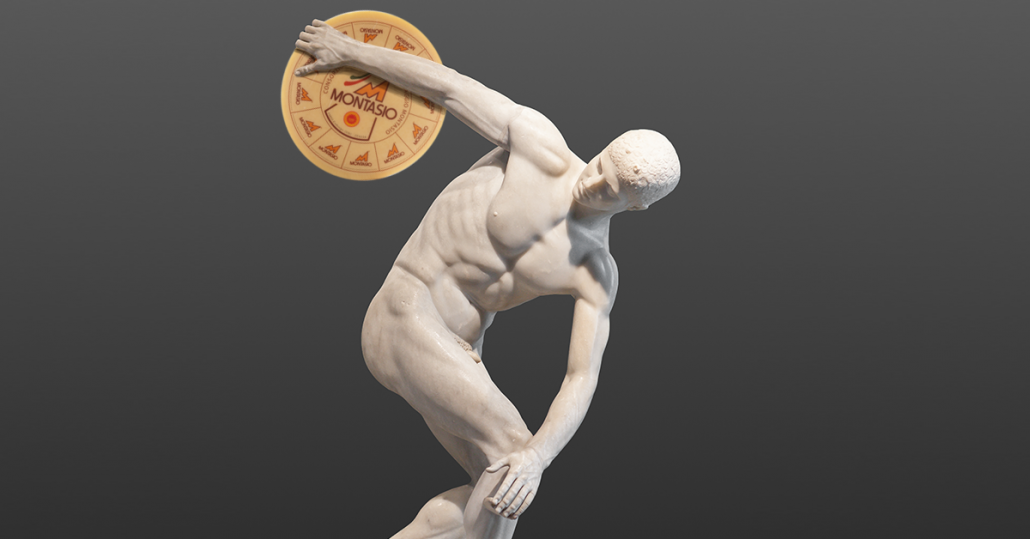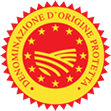Let’s pretend we are in a museum. We’ve just walked down bright corridors lined with neoclassical sculptures. We have seen ancient ceramics, display cases completely covered with jewels. On the walls, ancient canvases depicting portraits of women, bucolic landscapes and still lives. We are literally breathing art. We are also surrounded by the genius of the people who went through this life before us. Nice to see their expressions and their looks. The atmosphere around us is full of beauty.
Our guide stops in front of a medium-sized crystal case from which two other groups of visitors have just departed. Taking a proud bearing, the guide says “Here we can see a typical masterpiece of dairy art.”
We all go to the display case, intrigued, and admire a cylindrical form of cheese with flat and slightly convex faces. The form is commanding and flawless.
The plate at the case’s base recites “MONTASIO DOP”.
“Montasio cheese is part of the great family of Alpine cheeses,” says the guide as he walks around the highly polished display case.
“These cheeses date back to the first millennium. Their production was used to secure a perishable product such as milk.
“This provided food reserves for times when milk was scarce or non-existent.” “What a time-saving invention!” “They could therefore manage to eat cheese all year round, as we do!” exclaims a child, causing the guide to jiggle.
“That’s right: I’m going to tell you a little bit of history now. Montasio was born around 1200 in the Julian and Carnic Alps valleys, thanks to the perseverance and intelligence of the Benedictine monks.” Continues the guide.
In Moggio Udinese (on the north side of Montasio), there is still the convent, which is now used by the Clarisse nuns, where the various Malghesi production techniques were most likely refined. Let’s appreciate the beauty of this shape: the rind is smooth and thin, with a light color that darkens with age.
As a result, the consistency is compact and elastic. It softens in the Fresco version and gradually strengthens in the medium until it becomes decisive with a slight spiciness in the seasoned.
Instead, the Stravecchio version is particularly aromatic. As a result, we can say that you are looking at a genuine work of… ”
“No!” “Wait a minute” “Before declaring that this is a work of art, a tasting is considered necessary.” Says a kid in the crowd.
The guide, smiling, nods. “You’re right: I was about to invite everyone to the tasting in the room next door!”The group applauds and rejoices because there is always a party when Montasio is present.

